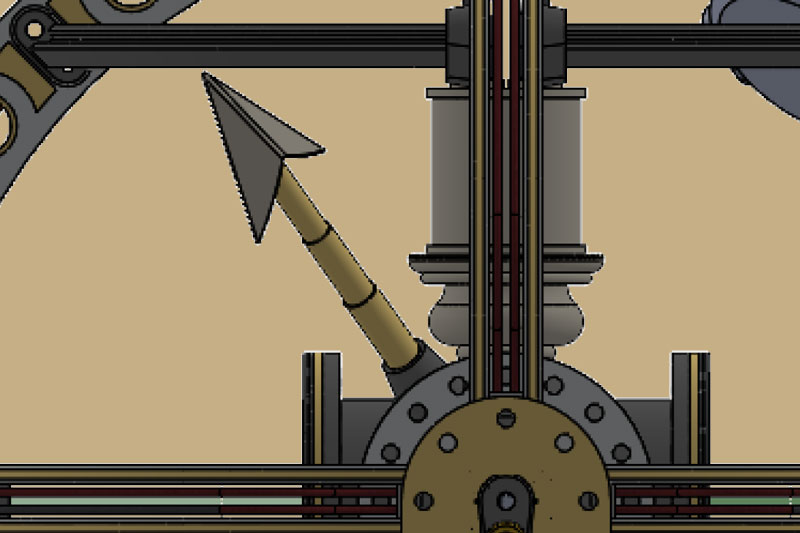Arrow
The brass arrow, which dates to the early twentieth century, evokes a Bloch vector. A Bloch vector is a mathematical object used in quantum information science. We can understand it through the lens of classical information. The basic unit of classical information is the bit. A bit is the answer to a yes-or-no question such as “Would you like jam with your scone?” One encodes a bit in a system able to be in one of two possible configurations. For example, a classical computer stores a bit in a transistor that’s on or off. A light switch can encode a bit by pointing upward or downward. Imagine measuring whether a light switch’s configuration. We might have advance knowledge about it. We can visualize the knowledge “the light switch is up” as the point at the top of a line. Similarly, we can visualize “the light switch is down” as the point at the bottom of the line. The line’s center naturally represents the condition “the light has a 50% chance of being on,” and so on. Different probabilities of pointing upward correspond to different points along the line. In summary, points on a line represent possible states of knowledge about a classical bit.
To progress from classical to quantum information, imagine a sphere that encloses the line. The line forms a diameter that stretches from the sphere’s top to its bottom. Every point on or in the sphere represents a quantum state of knowledge. The basic unit of quantum information is called the qubit. One encodes a qubit in a quantum property that, prima facie, seems like it can be in one of two possible configurations. For example, an electron can spin clockwise or counterclockwise. The sphere’s top and bottom represent these two options. But an electron can be in a superposition instead: the electron can behave, in some ways, as though it were spinning clockwise and counterclockwise simultaneously. Superpositions are represented by the rest of the points on the sphere. Thanks to superpositions, qubits are richer and more complicated than classical bits, just as a sphere is larger and more complicated than a line.
The sphere that represents a qubit’s possible quantum states has a name: the Bloch sphere. Felix Bloch was a 20th-century Swiss–American physicist and Nobel laureate. He used Bloch-sphere science to develop a technique behind magnetic resonance imaging, commonly called MRI and used in medicine. According to a previous paragraph, a qubit’s quantum state is represented by a point in or on the Bloch sphere. Equivalently, the quantum state is represented by an arrow that stretches from the sphere’s center to that point. This arrow, represented in the sculpture by the antique, is called the Bloch vector.
